Picturing Experience in the Early Printed Book
IMAGES
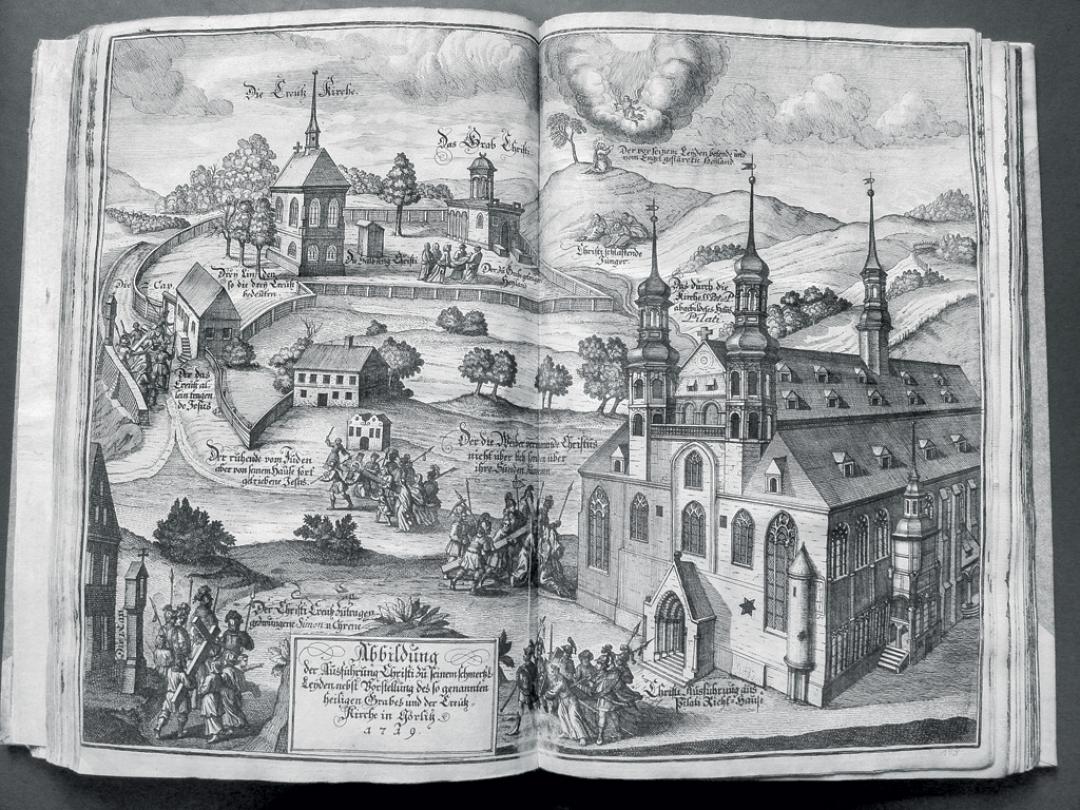
Illustration of Christ Carrying out His Grievous Passion with Picture of the So-Called Holy Grave and the Holy Cross Church in Görlitz, 1719. A Holy Week procession traced out Jesus’s journey east to west across the town, beginning with his condemnation at Pontius Pilate’s house (the Church of Saint Peter), then traveling to more stations along the route to the park. Eventually, this mapping of Jerusalem’s Via Dolorosa onto the Görlitz streetscape also included a Mount of Olives on a hill overlooking the park to the north, as visualized in an eighteenth- century engraving. Engraving from Ausführliche Beschreibung des Heil. Grabes zu Görlitz (Bautzen: Richter, 1726). Oberlausitzische Bibliothek der Wissenschaften, Görlitz, Gph VI 34 b. Photo: author.
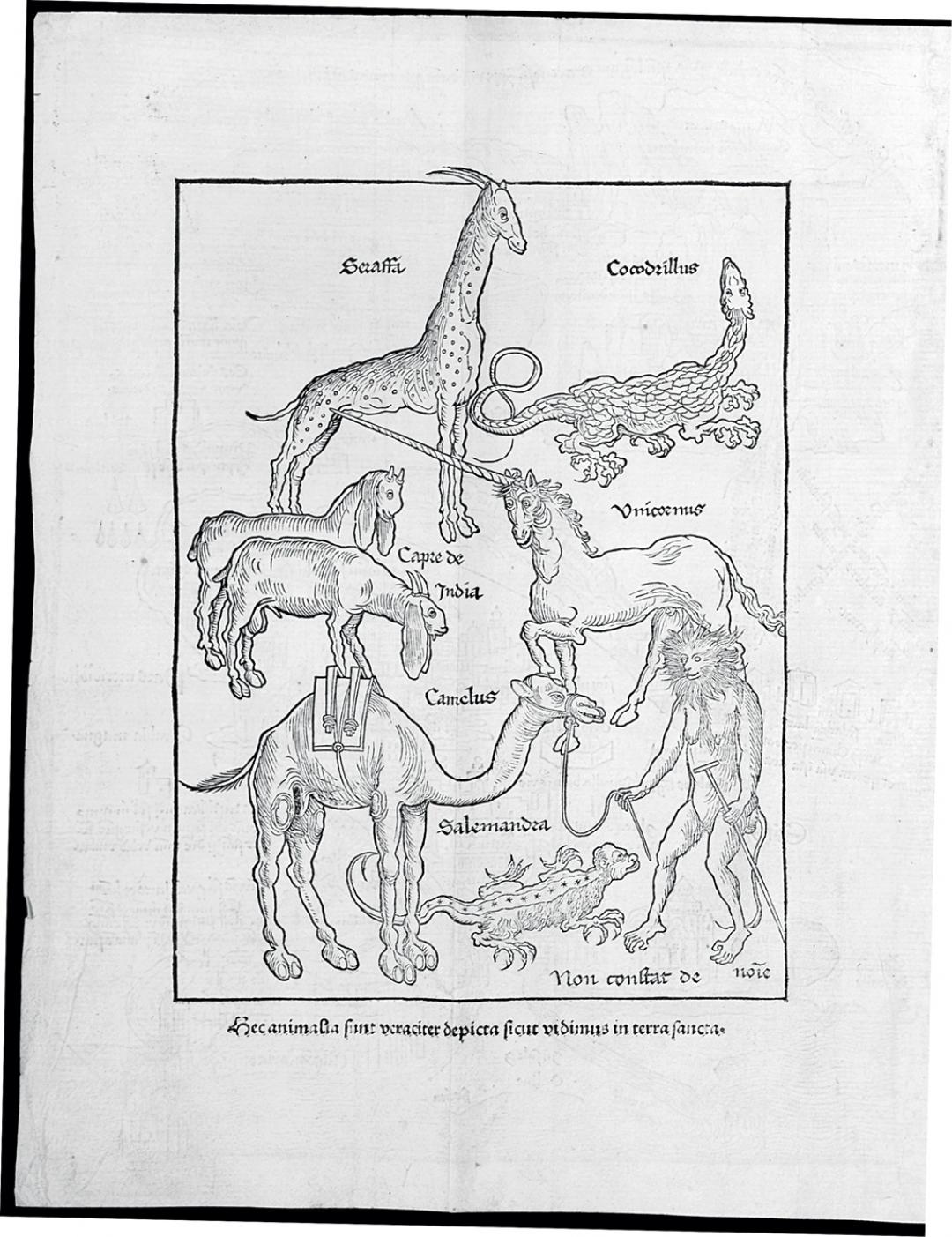
Printed on the back of the Map of the Holy Land with View of Jerusalem (fol. 143r–148). The caption on Reuwich’s collection of animals reminds the reader that they, too, are supposed to be “truly depicted” as the pilgrims “saw them in the Holy Land”. Seven examples of Holy Land fauna are brought together within a single frame above those words, which the presence of a unicorn (Unicornus) seems swiftly to belie. For today’s viewer this mythical beast is perhaps the first, most conspicuous sign that we might have reason to doubt the images’ claim to be based on an artist’s on- site transcription of what he saw, though we would be wrong to read its inclusion as a deliberate lie. Beinecke Rare Book and Manuscript Library, Yale University, Zi +156. Image in the public domain.
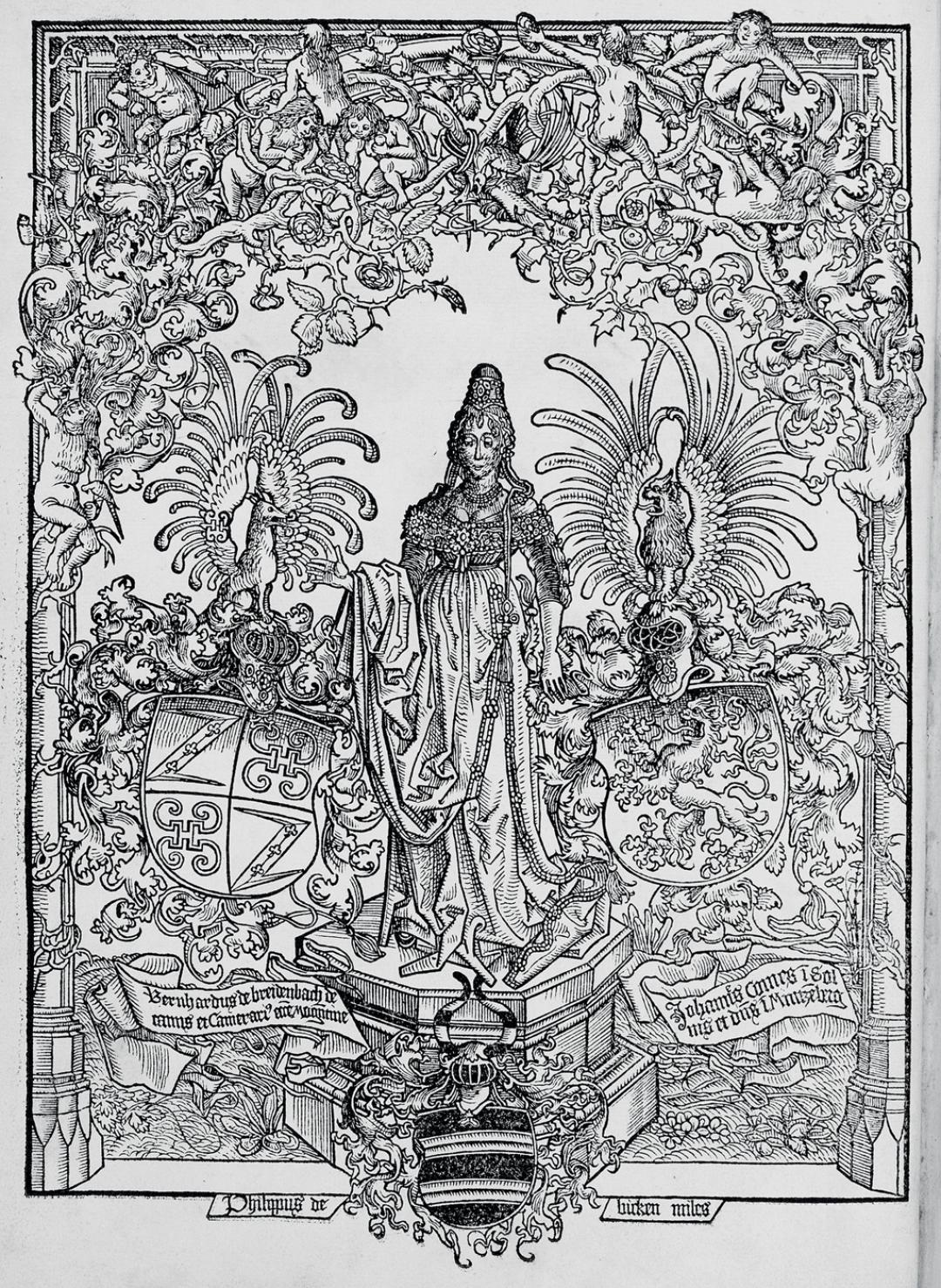
The woodcuts Reuwich produced for Peregrinatio include this complex and unusual frontispiece featuring a Venetian woman. The frontispiece introduces Breydenbach, or rather the lady on the pedestal does, with her extravagant dress amplifying the traditional conception of a shield holder— usually a fetching hostess or a playful creature such as a wild man, who presents a heraldic display. The person offering the shield lends the arms her good looks or his vitality, while providing an opportunity for exploring the female form or drolleries of costume and pose. Beinecke Rare Book and Manuscript Library, Yale University, Zi +156. Image in the public domain.
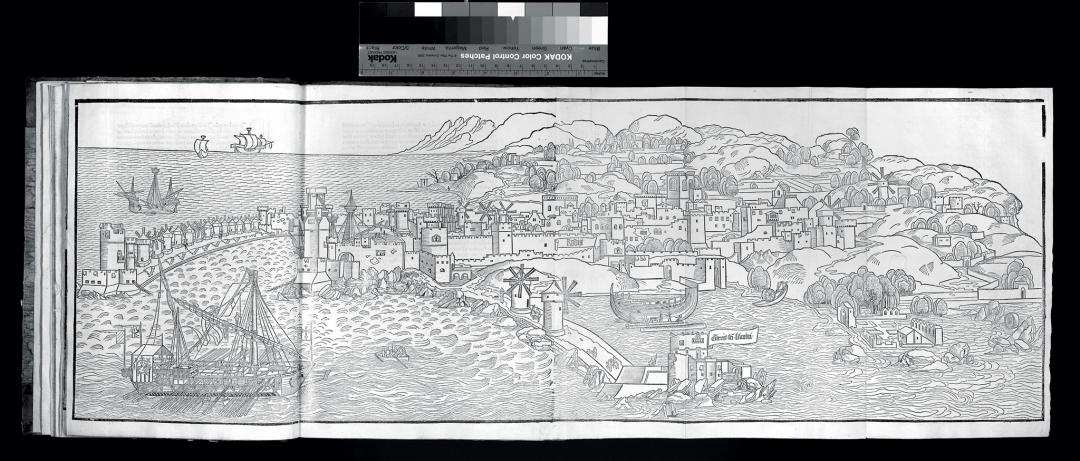
The Peregrinatio account includes brief reports of islands in the Mediterranean, illustrated with five smaller views of Parenzo (modern Poreč, Croatia), Corfu, Modon (modern Methoni, Greece), Candia (modern Heraklion, Crete), and Rhodes. All of the images are wholly integrated into the text; the first or last two leaves of the fold- outs are bound in the book with text printed on the recto of the left bound leaf or the verso of the right one. Damage to towers in Rhodes and the corpse hanging from the gallows on the shore in the background remind viewers of the depredations of the Ottoman siege of 1480 and the execution of a traitor in its aftermath (an event reported in the Peregrinatio’s account of the battle). Beinecke Rare Book and Manuscript Library, Yale University, Zi +156. Image in the public domain.

On the last page of the Peregrinatio, a woman crowned with an exotic turban and sheer veil tenders a shield with Reuwich’s own printer’s mark. Beinecke Rare Book and Manuscript Library, Yale University, Zi +156. Image in the public domain.

Portolan charts collected observations about the shape of the coast and relationships of distance and direction— information from pilots for pilots, and their production and use centered in the Mediterranean ports of Spain and Italy. They were as much a novelty in northern Europe in 1486 as any of Reuwich’s other imports. Beinecke Rare Book and Manuscript Library, Yale University. Image in the public domain.
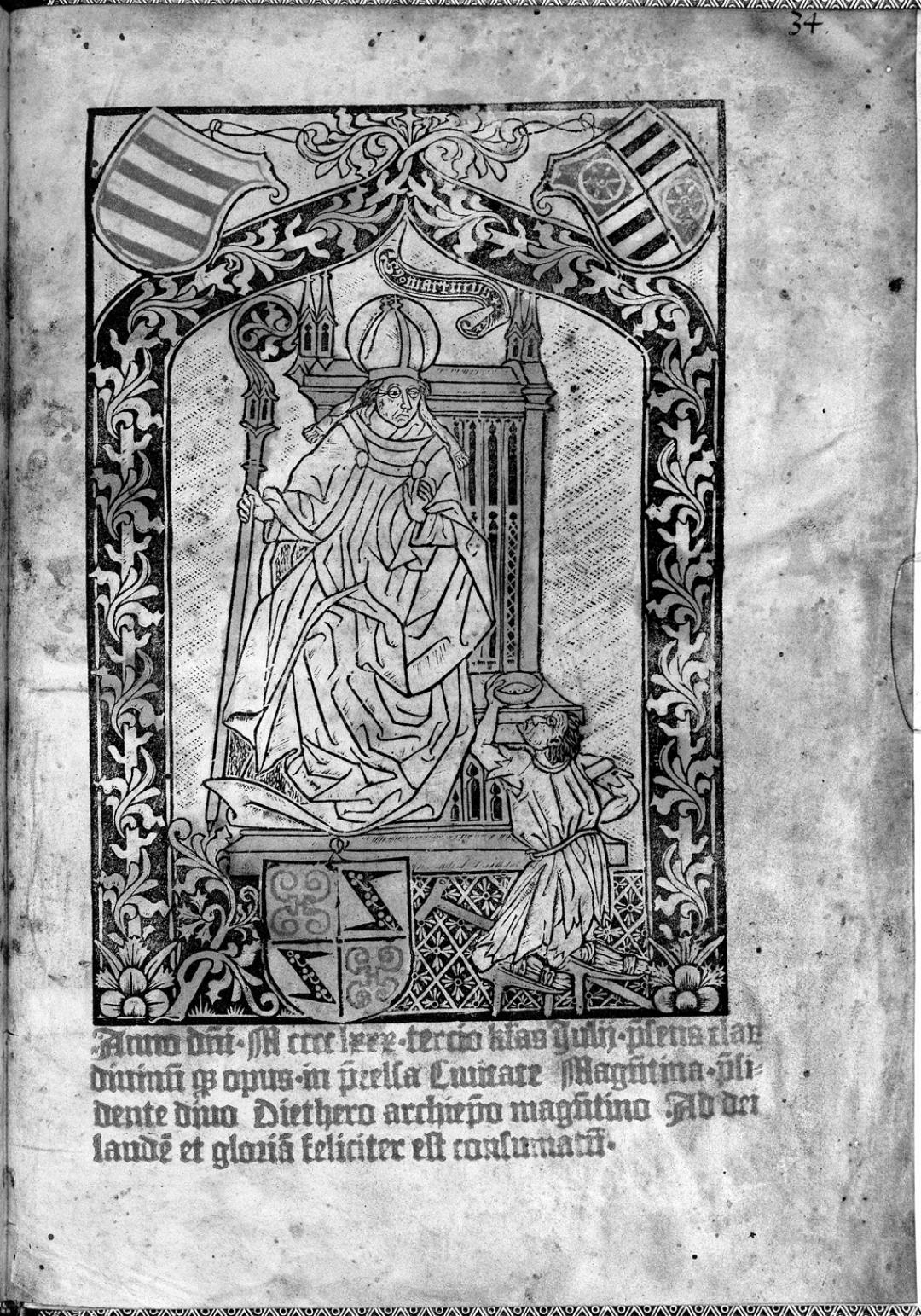
Saint Martin in Diether von Isenburg’s Agenda Moguntinensis, 1480, color metalcut with hand-coloring on vellum, fol. 38r. A disabled indigent makes a meager offering to an enthroned Saint Martin, a bishop and the dedicatee of Mainz Cathedral. The arms of the archbishop are strung above the saint, and the arms of Breydenbach hang below him at the level of the beggar. The layering of Breydenbach and the see of Mainz over the beggar and patron saint encourages the image to be read as an adaptation of the typical dedication miniature in a manuscript, where the author, on bended knee, presents a copy of his book to his enthroned patron. Here Breydenbach in all humility, a supplicant aided by the charity of Saint Martin, offers up his work to a patron who blesses him in return ex cathedra. The John Rylands Library, The University of Manchester.